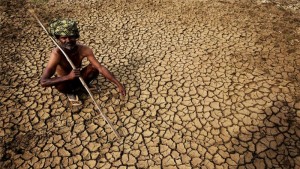Take a Cool Guess—The Fun Quiz on Renewable Energy. Today’s Topic: California’s Drought

Answer: Can be found at Clean Energy Answers.
Relevance: We have quite a bit of feedstock here; 12 million trees have died and another 46 million are threatened. It’s only a matter of time before property values start to plummet due to the lack of demand for housing with limited water, surrounded by dead trees and desert.

It is true that climate change is causing severe draughts in many places. However, it is also causing excessive precipitation and flooding in other areas and that too is serious. Here in New Mexico, and in other places as well, removing too much water from aquifers is causing the water table to drop alarmingly; it is not sustainable but in many places the solution is elusive.
In costal areas, if clean energy becomes economical and plentiful, sea water desalination can, in the future, be used to solve the problems of water shortages, The problem will be more serious in inland areas.
Not all droughts, floods and other weather phenomenon can be attributed to climate change.
Weather patterns alter over the years for a whole range of complex issues. The reportage and significance of local weather events is often more relevant to human occupation of land area, and changes to landscape than climate change.
The earths climatic history has never been stable and constant, and weather phenomenon only becomes a newsworthy event when it affects large populations, or places of interest.
It’s important to make a distinction between “weather events” and climate change, or climate change credibility will be damaged by the confusion.
It’s true that we can’t confuse “climate” and “weather.” It’s also true that each of the last 13 months has set a record for the highest temperature ever recorded in those respective months. Rational minds–and even a lot of irrational minds–are starting to piece this together and conclude that humankind really needs to get serious about climate change mitigation. https://weather.com/news/climate/news/record-warmest-may-earth-2016
Unfortunately, it is impossible to know for sure whether individual weather events are related to climate change. But when unusual weather events become more and more common, it is reasonable to suspect that many of them, or the severity of them, are the result of climate change.
Hi Frank,
What you say is reasonable, but then so too is the danger of looking for a pattern to justify a theory.
Consider the Great New York Blizzard of 1888 or Great White Hurricane, that paralyzed paralyzed the East Coast from the Chesapeake Bay to Maine. This weather phenomenon was preceded by smaller, but erratic event for the past decade, and by 1907 had largely ceased for decades.
If such an event occurred today, it would hailed as evidence of “climate change”. Yet if it occurred 200 years earlier, it would have gone unremarked.
Weather patterns are constantly changing from location to location, for several centuries it was possible to ice skate on the frozen Thames river in London. Mini-ice ages, and hot spells, along with periods of extreme weather conditions, come and go at regular intervals as the natural process of the planet’s Geo-sphere.
While this doesn’t refute the consequences of human contribution to climate change, it does warn against the danger of alarmist activists claiming every change in the weather is the result of “climate Change”.
Quite true, but when combined with shrinking ice caps and glaciers, it certainly adds to the evidence that climate change is occurring. Also, this is all happening at a time when, according to scientists, the earth would be expected to be entering a cooling phase.